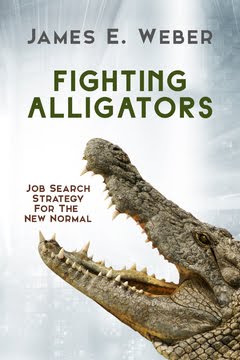Last week I listened to a social media marketing webinar. Recognizing the difficulty of selling for many, the presenter said, "make it easy for people to buy from you." A very subtle but interesting twist of thinking. Military tacticians might call this a flanking maneuver. In other words, don't approach your prospects where their defenses are the strongest. Contact them through their trusted associates and friends who know your work. Deploy the power of your network.
Your network may be your most valuable business development asset. To be effective, they must understand your strategy and capabilities. They must know what you are trying to accomplish and how to help you. You must keep them informed through periodic updates.
When I started my business, internet marketing was in its infancy. I began using email blasts to keep my network up to date on my work. My outreach reminded people that I was landing new contracts and that I was successfully completing my work. I would even profile exceptional candidates. It was an excellent way to generate interest and new business. I was pleased to learn that my emails had been forwarded three or more times, expanding my audience. Talk about the power of networking! To better manage my email marking program, I eventually migrated over to Constant Contact and Mail Chimp. These tools help me maintain top-of-mind awareness so that when the need arises my clients and prospects know to call me.
You must work to build your network continually. If your network isn’t growing, it is probably shrinking. Become active, making new contacts. Give them a reason to follow you. I use ‘call to action’ buttons on my website, email signature line, and social media accounts, inviting people to join my email list.
Put your clients on your team and encourage them to support your business development efforts. If they are agreeable, identify them alongside your completed contracts. This is the time-tested “Band Wagon Strategy.” I have a friend who refuses to consider this technique. He considers it to be unethical. Unfortunately, his business suffers frequent famines, from this failure. When you complete an assignment successfully, ask the client for a reference and referrals. This is an effective way to leverage your relationship.
Most freelancers I know use LinkedIn, an excellent networking tool. Make sure your LinkedIn profile is complete and fully describes your services. This simple point is often neglected, which works against one’s goals. Spend the extra money for a paid subscription. The added benefits are worth the expense, especially the ease of direct contact with prospects, and the SEO feature. When I perform a Google search of my name or brand name, my LinkedIn page is listed
before my website. This feature makes it easier for people to find me. Generate more exposure and contacts by participating in LinkedIn groups that match your interests. Another small but often overlooked technique is to place a link to your LinkedIn page in all of your correspondence, usually in the signature section. Simple, right?
LinkedIn provides your clients the ability to give you a recommendation. I like to place their quotes on my website as well. Make it easy for them by writing your reference. They can edit to their liking so you can cut and paste into your LinkedIn page.
If you want to step it up a notch, start a blog and promote it to your network. My blog is based on my experiences. I like to reach out to contacts and prospects to get their thoughts on my projects, then quote them on my blog. This is a great twist on the Cold Call. In fact, it is a non-threatening sales call where the prospect is happy to talk with you. Admittedly, this takes a little more time but is manageable if spread over a few days. My blog posts become job search reference material for my candidates.
You have a vast array of tools to use, including Facebook, Twitter, and blogging to promote your business. They are low-cost ways to communicate the benefits of your brand. For a success, make time to put them into effect. Help your network help you!
Thank you for visiting my blog. I hope you enjoyed my point of view and would like to receive regular posts directly to your email inbox. Toward this end, put your contact information on my mailing list.
Your feedback helps me continue to publish articles that you want to read. Your input is important to me so; please leave a comment.
Jim Weber, President
New Century Dynamics Executive Search
JimWeber@NewCenturyDynamics.com
Author of: Fighting Alligators: Job Search Strategy For The New Normal
Current Assignments
1. COO- Atlanta-based Casual Dining Restaurant Company - New
2. Director of Business Dev, Atlanta-based B2B Professional Services Company: Complete
3. Payroll-Benefits Manager, Atlanta-based Retail Company: Complete
4. Senior Accounting Manager – Atlanta-based Manufacturer. Complete
5. Controller - Atlanta-based Restaurant Company: New
6. Outplacement Assignment - Atlanta-based Manufacturer: New













